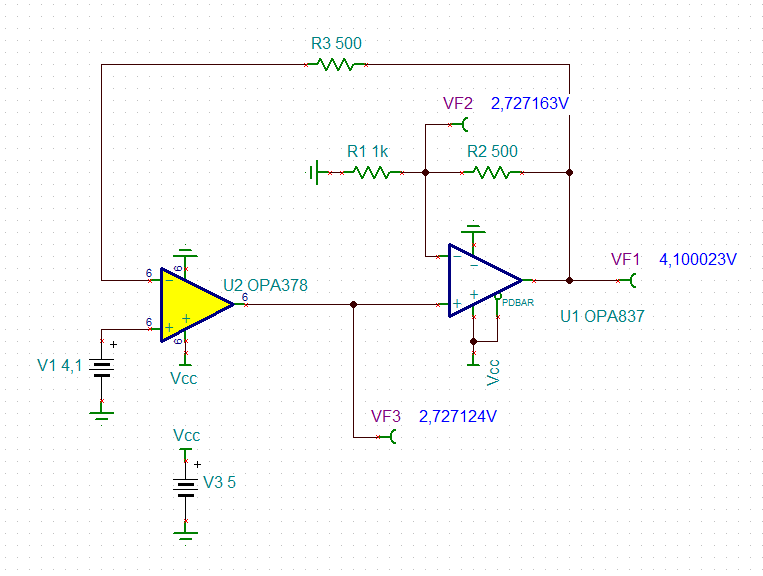Other Parts Discussed in Thread: OPA625, TIDA-01055
I was wondering about the common-mode input range of the OPA837 when used as a reference buffer for an ADC.
The TIDA-01055 compares the OPA625 with the OPA837 as a lower power option. In Figure 7 of the Design Guide V1 = 4.1V (similar to Figure 10). But 4.1V at the non-inverting input of the OPA837 violates the common mode input range when powered from a 5V supply. OPA837 datasheet states 3.8V typ. for its high input CM voltage.
1) Why is the OPA837 suggested for this application? (I am considering the OPA837 for a similar application.)
2) What is the meaning of "< 3-dB degradation in CMRR limit" on page 8 of the datasheet concerning the input CM?
[1] https://www.ti.com/tool/TIDA-01055
[2] https://www.ti.com/lit/ds/symlink/opa837.pdf


